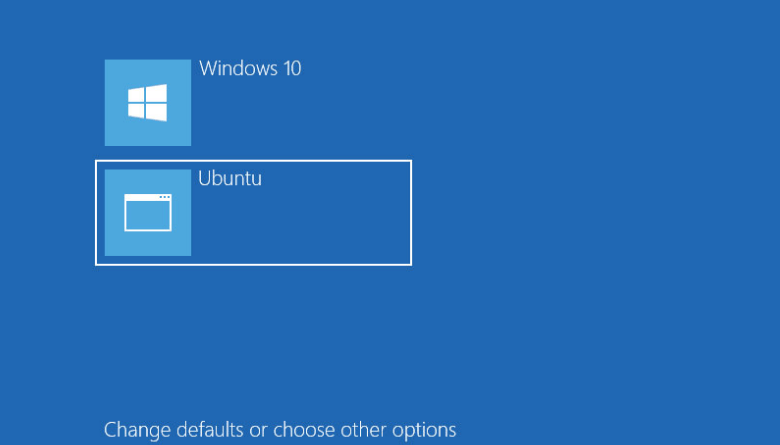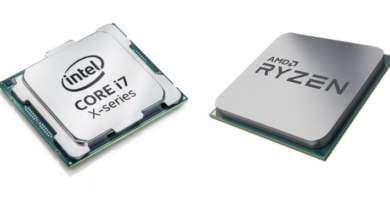Windows and Ubuntu dual booting

Windows and Ubuntu dual booting: Windows and Linux can be run simultaneously using dual booting. Installing the two operating systems alongside each other is relatively straightforward, and it gives you an opportunity to learn more about computers and software.
Choosing hardware components that will go into your system is part of the process of building your own computer. There are some compatibility restrictions to be aware of, but there are still plenty of options whether you choose to be on Team Green, Team Red, or Team Blue.
Your new rig is ready to be enjoyed as soon as you get that glorious POST beep! You still need to install one important component before you can play games, use word processors, or browse the internet: the operating system!
There is more than one way to experience Ubuntu, each with its own flavor of Linux. Pop!Pop! OS are ideal for gamers or for those who are transferring from Windows to Linux. Elementary OS’s striking design has been compared to Apple’s macOS. There are just a few operating systems available.
The tool is used by a lot of people in their day-to-day activities, and it supports a variety of applications natively. The macOS operating system is Apple’s own operating system. The licensing and restrictions placed on non-Apple hardware prevent you from simply installing macOS on your new machine. Apple claims that such methods are illegal. People have figured out how to pull it off, however.
Dual booting is a great way to learn more about computers and software
Linux is the third option. It’s possible to choose the flavor that’s right for you, as we’ve covered before. In essence, however, they’re all derived from the same Linux kernel, so for the sake of argument we’re going to lump them together all together. So basically, you must choose between Windows and Linux. The goal of this article is to explore the option titled, “Why not both?”.””
What makes Linux so special?
Most people are better off installing Windows. It’s safer, and you’re most likely to use it anyway, and it does what it’s supposed to do by default. Do you need Linux at all? The first advantage is that most Linux distros are free, so you may be able to save some money.
You can track the latest OS features by following its development as the Linux kernel is open-source and most Linux distributions remain free. Linux also has the benefit of being relatively lightweight when installed. Windows comes with very little bloatware, and its system requirements are small compared to Windows: less RAM is needed, the installation takes up less disk space, and it supports older CPUs.
If you are trying to resurrect an old computer, some Linux distributions make the ideal choice. Although Linux can be customized to a great extent, the choice of Linux distribution itself is really the start of the customization process! There is something unique about each distro. We recommend you read this article we wrote a while back for an overview of a number of popular options.
It is possible to customize the look and feel of a distro by using different window managers, animations, desktop options, etc.. You can typically find the best tech support on a lot of forums with a strong and vibrant community. Still, Linux is not for everyone. It is possible, for example, for some applications to be specifically designed for a Windows or Mac environment, and so will not run on Linux.
You can use a variety of open-source alternatives, but certain things (like games) might be glaringly absent.While Steam has begun to support many games on Linux — and this is starting to change — there are still some tradeoffs to consider before abandoning Windows entirely for the open-source alternative. Nevertheless, why abandon anything?
If you want the best of both worlds, why not install both Windows and Ubuntu side-by-side? It is precisely this approach that is referred to as “dual booting,” which can be mastered with just a little guidance. We would like to explain what happens underneath the hood of your computer when you dual boot. Dual booting isn’t a requirement to proceed, but this section provides some background on the various options and complexities behind why there needs to be a guide on the topic at all.
How Does Bootup Work?
The motherboard takes charge of your PC’s boot process when you press its power button. The BIOS assumes control, conducting some basic diagnostics and ensuring all necessary hardware is in place and functional (RAM, storage, keyboard, mouse, etc.).
Once the BIOS finds the master boot record, the OS can be booted up and you can start running applications on your hardware. Master boot records (MBRs) are stored in the first block of bootable disks (whether they are HDDs, SSDs or USB hard drives).
During bootup, the location of the MBR is hardcoded to make sure it can be found. All it has to do is find the OS and boot it. The magic begins at this point. There is not enough room in the MBR itself to include all the information needed to boot an OS. A bootloader, on the other hand, is usually responsible for reading the information about the OS, preparing it for use, and loading the necessary files into RAM. Boot loaders differ between different operating systems.
The Windows boot manager is called Windows Boot Manager, while the Linux bootloader is called grub. Dual booting now includes multiple OSes, and you have the option of choosing what OS to boot from when you boot. Exactly how does that work? Choosing the OS requires an operating system! This “operating system” in Linux is (also) called grub. If you have already installed Grub, it will automatically overwrite the Windows bootloader.
Grub now scans the disk and identifies all the different versions of operating systems on it. Once the user chooses a bootloader, it will record its disk location so that it can jump to it. Most Linux distributions (such as Ubuntu) include Grub as part of the installation process. Using the installation guide makes the process seamless, and following the guide is easy.
You must use a separate flash drive to install a new OS since you have to boot from the USB when you install the first and second OS. It is not necessary for you to know all of this information in order to dual boot your PC. Throughout this section, we’ll explain each process, but if you’re curious what each step does, feel free to jump back to this section.
Before you Start
Prior to beginning, you will need a few things, as well as several things you should keep in mind. We’re going to dual-boot Windows 11 and Ubuntu 20.04 LTS (long-term support) in this tutorial.
- Ensure your PC meets Windows 11’s requirements.
- To install Ubuntu 20.04 LTS, make sure your PC meets the following requirements:
- Processor with a speed of 2 GHz
- (4 GB RAM is sufficient)
- Hard drive space of 25 GB
- Resolution: 1024×768
- Microsoft Windows 11 and Ubuntu LTS 20.04 have a recommended size of 25GB per operating system, according to current specifications. This means the minimum amount of space to be available for storage should be 50 GB.
- It is highly recommended you dual boot with at least 128 GB of storage.
You will need at least two (2) flash drives with at least 8GB of storage space each for the installation process. A minimum of 8 GB should be provided for the storage medium that will be used to install Ubuntu, and a minimum of 16 GB should be provided for the storage medium that will be used to install Windows 11.
Both images should not be stored on a single flash drive. Booting from a flash drive will cause a headache during installation. When dual booting, the amount of space to dedicate to each OS can be chosen. While using Ubuntu, you will be able to access both your Ubuntu and Windows files through the file system: this is a very important note to keep in mind.
The files on your Ubuntu partition will not be accessible when you are in Windows. Linux file systems, including ext4, are not supported by Windows. Windows is unable to read or detect ext4 partitions or devices directly. It is still possible to have more than one physical drive on your system, and you can use the other devices to access shared files.
The additional drive will be visible in either operating system if the secondary drive is formatted in an NTFS file format. Lastly, although dual booting from two different SSDs is technically possible, we do not recommend it. vThe added complexity might not be worth the manageability and maintenance (as explained briefly in the previous section).
Dual Booting: A Step-by-Step Guide
You can begin the installation as soon as you have your PC up to spec, have chosen the SSD, and have the two flash drives ready.
Each ISO file is available for download
Windows 11 and Ubuntu 20.04 ISOs are both available for download directly from our download section.
Make bootable thumb drives for each OS
Once you have downloaded the files, you will need to transfer them to a flash drive and make the flash drives bootable. The BIOS doesn’t recognize a bootable flash drive if it does not include OS-related files during bootup, unlike when files are simply copied onto the drive. This will be handled automatically by the utility tool.
Make a bootable thumb drive for OS 1: Windows 11
Depending on whether you plan to install Ubuntu on an existing system or on a new machine without another operating system (you can add Ubuntu to a pre-existing system or install it on a machine without any operating systems), you will need to take this step.
You can skip Step 2.3 if you already have Windows installed as your first OS, and you just have to prepare a bootable flash drive that contains Ubuntu. You will need to use Rufus to create a bootable flash drive containing Windows 11 if you do not do so already. Below is an example of how we configured it.
Make a bootable thumb drive for OS 2: Ubuntu
To dual boot your second OS, you’ll need to create a bootable flash drive following the same steps as above. You should make sure each USB drive only contains one bootable operating system, so use another USB drive altogether. A single flash drive will not work for both, because the second OS will require formatting before preparing it for use.




